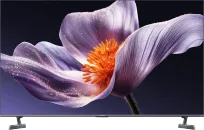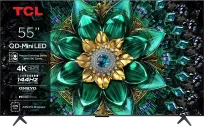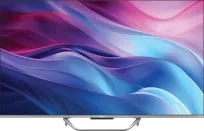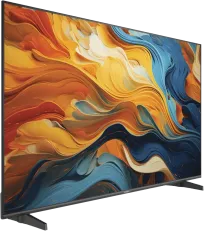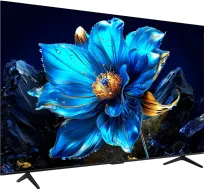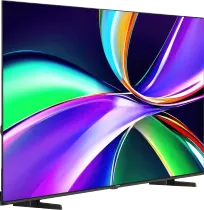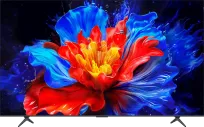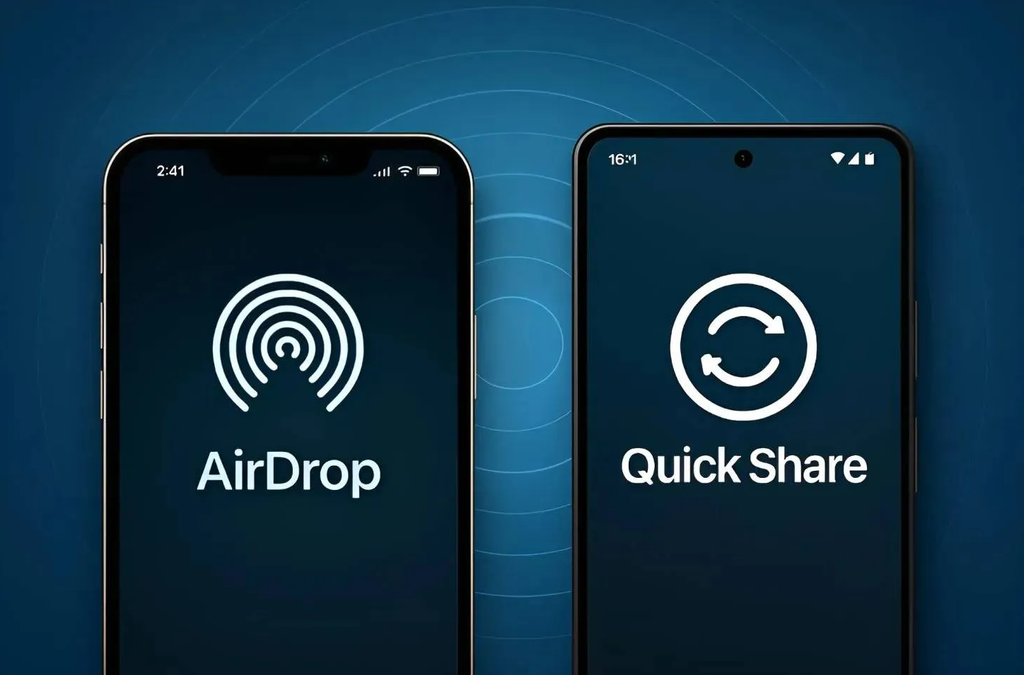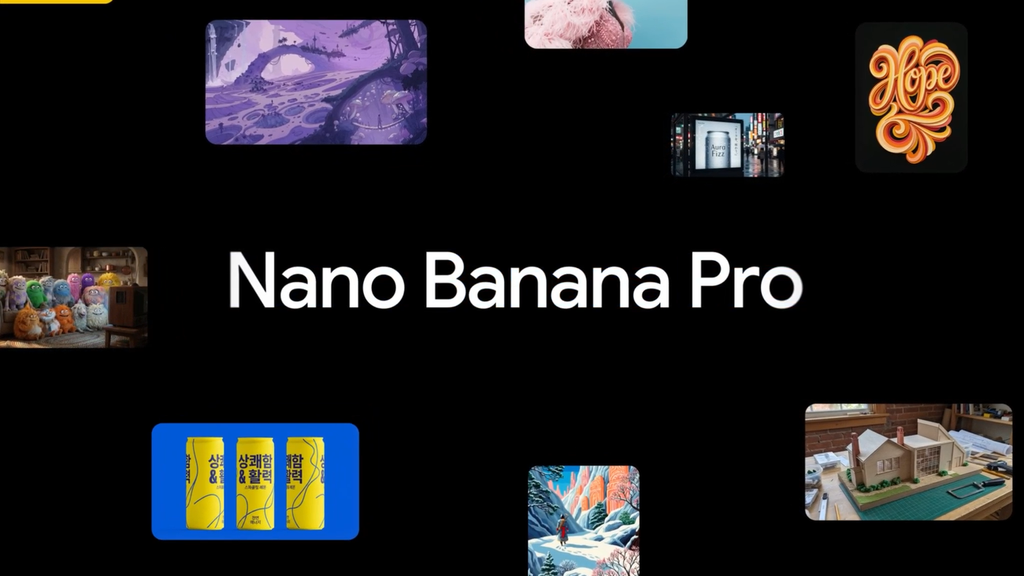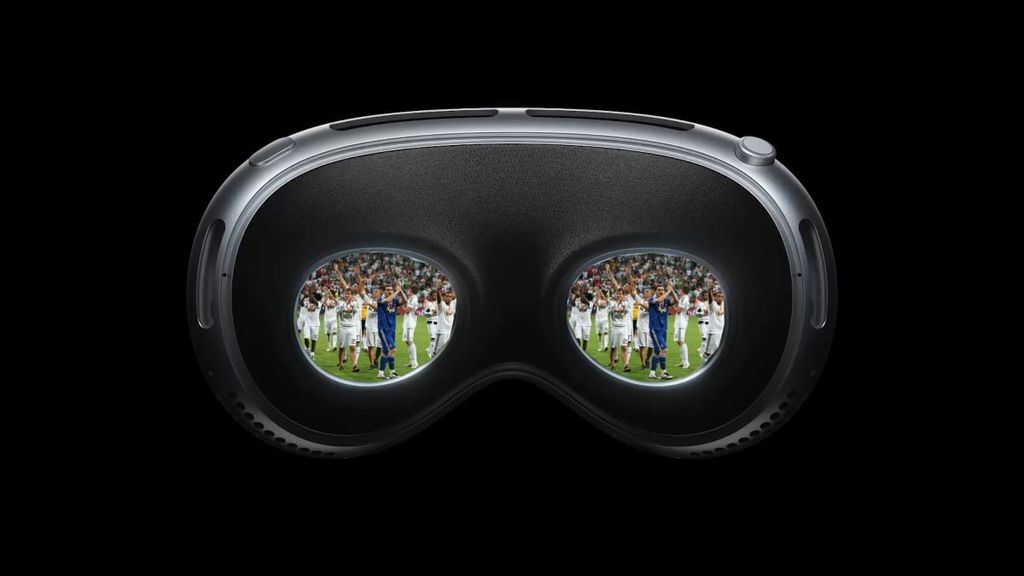
Until recently, the idea of a 100-inch television in our home was almost unreal. With the advancement of technology, models of this size are now widely available, and as a result, projectors have gained competition. Therefore, a real problem may be the decision of what to purchase for our living room, a 100-inch television or a projector?
We will try to answer this question by comparing the Hisense U7KQ and the JVC RS540 with an Adeo screen.
Installation of a projector and a television
One of the factors when choosing a device is the option of its installation. Installing a projector often requires alterations to the wall or ceiling, which is best to consider at the design stage of the room, as this allows us to hide the cables. Cables running exposed along the wall are not a very aesthetic solution. A screen is also needed to use the projector, which we must also install.
The television is ready to operate practically straight out of the box and placed on its factory stand. Optionally, we can mount it on the wall, but this is not required for using it.
Image Quality
When choosing a particular device, we are mainly interested in the quality of the image. What does this statement imply? They are:
High brightness
Deep black
Rich colour palette and accurate reproduction
Good sharpness and detail of the image
Viewing angles
Smoothness of the image
Input lag
In our test, we will refer to the features mentioned above and share our impressions with you. Remember that your feelings about the projector or television may vary, as a different configuration of these devices can affect this.
Light from the matrix vs reflected light
First of all, we need to debunk the myth that light reflected from a screen gives a different image than that generated by the matrix. We are used to televisions sometimes dazzling us with brightness, especially on shop shelves, as well as with vivid colours.
However, the fact is that after proper calibration, both of these devices can provide a very consistent image. Can you distinguish the television from the projector in the picture below?
It happens that during the post-production process, filmmakers work interchangeably on these devices, and often replicated features of the projector, such as a darker image, blurring or other colour processing, are just a matter of configuration.
The equipment used in this comparison is the Hisense U7KQ, which is an LCD television with Miniled technology, representing the premium segment. The JVC RS540 projector is connected to a white, matte Adeo fabric. This JVC model is a few years old, yet there is still no better successor at this price. Both devices are currently around 18000 zł.
Brightness Comparison - SDR
With the projection size reduced to 100 inches, which is the size of a television, the projector is able to deliver 140 nits. This is even more than enough to comfortably watch films after dark, as you could see in the previous picture. Of course, we can set the flat screen in such a way as to generate higher brightness, but this does not favour cinematic conditions.
With regular video content, one can conclude that the devices are equal in this aspect.
However, this changes with HDR content.
Brightness Comparison - HDR
In HDR content, whether it is a film, series, or game, as well as regular HDR or Dolby Vision, the television definitely wins in brightness compared to a projector. This is due to the limitation of lamp or laser power, and there is no such device on the market that could compete with a television.
Even when purchasing a projector for 50,000 PLN with a glossy screen, we can achieve around 200 nits, and such a result can be achieved by televisions costing just a few hundred PLN.
Brightness in HDR mode is never too much, as it not only increases brightness across the entire screen but also enhances individual effects, as seen in the photos below.
Hisense can generate an average of about 1,000 nits, so the gap is enormous.


Short throw projectors, such as the Hisense Laser TV supporting HDR and Dolby Vision, or other high-end models, correctly display such content, but the impact on image quality is minimal due to limited brightness.
Brightness in the Day
When watching in external light, brightness is key. 140 nits in our JVC, or even 200 nits in the aforementioned Hisense Laser TV, allows for comfortable viewing only in very little sunlit rooms. How can we define such a room? If we lower all the blinds and are left with only the upper windows, we will still be able to comfortably use the projector. The situation changes when we let more light into the room, then the image becomes less visible.


In the case of the television, even with all the blinds open, the image looks much better. The difference in the number of nits generated by the devices is definitely noticeable. Despite possible reflections on the screen, the viewing comfort is significantly higher, and in such lighting conditions, the projector cannot cope.
Contrast comparison
In dark scenes, the projector performs quite well. The JVC RS540 was for many years the projector with the best contrast, and it still has no competitor beating its score of 16000:1.
The problem arises in mixed scenes when reflected light returns to the screen and brightens its blackness.
An important issue is the proper adaptation of the room to the level of light. Even in our test laboratory, which is a fully blacked-out room, the contrast will decrease, for example, in the scenes below.
In the case of televisions, the impact of the environment on contrast is completely overlooked, although they can have varying efficiency depending on the technology used. A cheaper television without Mini-Led backlighting, such as the TCL P745, would lose out overall to our JVC projector. However, models with OLED panels or high-end Mini-Leds would literally crush this one and any other projector.
There are, of course, projectors like the Christie Dolby Cinema worth several million złoty, but we probably do not plan such a budget for building our home cinema.
Considering cheaper DLP projectors, such as Optoma, or portable ones like the Samsung The Freestyle or solutions from Xiaomi, they have a contrast 10 times lower than our JVC RS540, so they would be ruled out from the very start in this confrontation.
Comparison of contrast in light
Watching content on a projector in a lit room gives us poor contrast. See below how the light source falling on the screen reduces quality.



As you can see from our test, with an increasing amount of light in the room, the image significantly loses quality. The conclusion is that to talk about any quality of projection, the room must be completely isolated from light. To this end, our clients designate dedicated rooms or install sealed window blinds, which should be closed before a screening. This is the only permanent solution.
Screen manufacturers want to assist us in this matter and are creating special ALR (Ambient Light Rejecting) screens, which literally means rejecting ambient light. One of the most effective is the one included with the aforementioned Hisense Laser TV projector. This comes with certain consequences. The structure of the image shimmers, and the centre is noticeably brighter than the edges. Even with such an improved screen, the problem of image quality degradation due to light in the room is not eliminated, only reduced.


Colour reproduction
In terms of colour reproduction, both the JVCRS540 and Hisense U7KQ perform quite decently. They deliver a wide spectrum of colours, allowing for a natural image when the Filmmaker mode is activated or ideally after a professional calibration, where we achieve an image free from colour distortions.


In the case of cheaper projectors and televisions, they often cannot reproduce such a wide palette of colours as to display strong, vivid hues.
The topic of colours is an important component of image quality and is highly dependent on the configuration and calibration of the equipment. After making the appropriate settings, it may stop displaying exaggerated, "candy-like" colours and may even begin to resemble a painting on canvas. This was the intention behind Samsung's creation of The Frame line, where after calibration, our television can serve as a work of art ;)



Sharpness and resolution
In this competition, the television easily takes the win. In its case, sharpness is always visible, while projectors are somewhat worse. When we purchase a model with a native 4K chip (around 20,000 PLN), the limiting factor remains the sharpness of the lens. By increasing the budget, we can find a device with a razor-sharp image, for example, the JVC RS4100, but it may at best only rival a television in this category.
Below, you can see in the first picture a screen displayed on the television, and in the second, an image from the JVC RS540. The advantage of Hisense is visible, but we must mention that our JVC is not a native projector.


Games, sport, angles of view
When using the console, there is no clear advantage between devices. We can only point out that input lag on projectors is often twice as high - 10 ms vs 20 ms with a 4K 120Hz signal. However, with everyday use, we should not feel any difference in these values.
When watching sports content, there is no gap between the devices, as most of them operate at 120Hz and are equipped with motion smoothing technology, so motion blur shouldn't be an issue for us.
The situation improves for projectors when we talk about viewing angles. Despite using a screen made of glossy fabric or simply of poor quality, the angles will still be more visible than on LCD televisions. The competition for projectors could be OLED televisions, but for now, they are not available in such large sizes.
Summary of comparisons
Considering all the pros and cons, one can confidently say that the television has won in almost every respect against the projector. So why are there so many buyers of these devices and why do we, one might say "critics," use such equipment? The answer is quite simple and you probably know it too. It's all about size.
If we are looking for a 130" screen, or even a 150", the world of projectors invites us.
If we have a substantial amount of cash, we can choose, for example, the TCL X955 with a diagonal of 115 inches, but that’s where the options end.
The development of technology suggests that soon models with larger sizes will appear on the market, but projectors will always aim to be a few centimetres bigger. One day this race will have to end, but does that mean the end for these devices? Not necessarily, because they have advantages that will attract new users.
Firstly, they can be easily transported, display images outdoors, and after a screening, can be tucked away into a backpack, like the Samsung The Freestyle.
Secondly, we can mount a projector so it doesn’t spoil the aesthetics of our living room, and hide its retractable screen in the ceiling. A television, especially one that is 100 inches, is simply a black blot on the wall, which is not an aesthetically pleasing solution.
Thirdly, a projector is associated with the smell of freshly popped popcorn, preparations, and the anticipation of a show. It has its own "magical" atmosphere that will always be an inseparable part of this solution.
What to choose?
Definitely, the purely technical considerations indicate that if we have a dilemma between choosing a 100-inch television and a projector, we recommend the former. The issue of rituality when watching may be less significant, but our sessions can last from dawn till dusk, regardless of the brightness in the room.
 Paweł Koper
Paweł Koper
